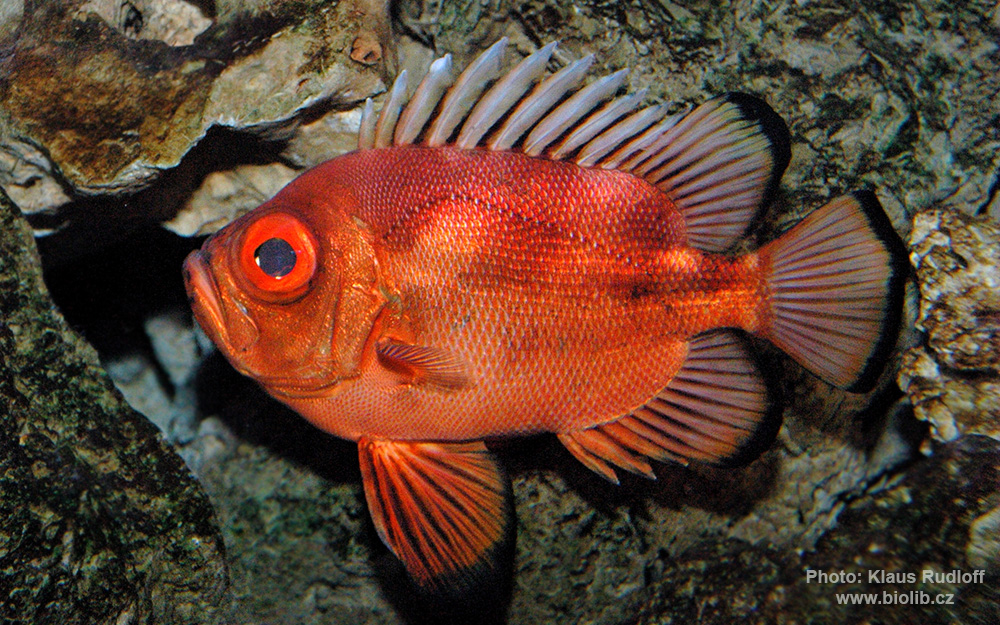Popeye catalufa
(Pristigenys serrula)

Classification
General data
The popeye catalufa (Pristigenys serrula), also known as the bigeye soldierfish, is a species of marine ray-finned fish in the family Priacanthidae, the bigeyes.
This fish has an overall dusky orange to red colour with white markings. The dorsal fin appears feathery while rest of fins have black margins.
It occurs in the eastern Pacific, where it is found from Oregon to Chile, and even the Galapagos Islands and Panama.
It grows to a size of 34 centimetres (13 in) in length.
This species is nocturnal and shy, preferring deeper waters off islands. It has been recorded associating with squirrelfishes and cardinalfishes but the popeye catalufa goes as deep as 76 metres (249 ft), deeper than its associated species. This species has been recorded from rocky habitats at depths of less than 5 metres (16 ft) to over 100 metres (330 ft).[2] It is a carnivorous species and, when kept in captivity, is known to feed on worms, crustaceans and brittle stars.
The family of Pristigenys are an epibenthic group that are found in rocky or coral environments around depths from 5 to 400 m and have been observed in some caves within its geographic range. This is only true of the adults of this family, as the eggs, larvae, and juvenile stages are found in open water and stay near the middle of the water column until they mature.
The body of the fish is compressiform, deep and robust, with large eyes that are around a third of the length of the head. The species has an upward projecting mouth. The most noticeable trait that gets this fish aquarium attention is its bright red iris, body, and darkly detailed tail and fins. The P. serrula’s preopercular and preorbital margins serrate. The gill rakers present are short with 16 rakers on the horizontal limb of the outer arch.
The dorsal fin has 10-11 rays, and pectoral rays numbering from 17-18. The dorsal fin is continuous for this species along with the anal fin containing 10 to 11 soft rays. This species also has very small ctenoid scales and lateral line scales 42 to 51. There is a tall, dorsal spine with the first and last spines being much shorter and equaling the rays in length. The spines on the anal fin are similar but much shorter. The pectoral fins are the smallest fins and barely reach the pelvic fins. The pelvic fins are elongated and about the same length as the anal fin. Pelvic fins spines are long enough to reach the base of the second anal spine.
Some unique textures of the respective fins are that the dorsal and anal fins are covered in a sheath and also that the vertical fins are dusky with the soft parts being slightly speckled. The ventricles are black and the pectorals pale. All spines of the fish roughly serrate. The species’s gular, maxillary, mandible, and branchiostegal membranes are coated with spiny scales. The colors of P. serulla are of light olive tones, striped with four laterally darkened striations which are wider than the between spaces. The last striation is located on the base of the caudal peduncle. The caudal peduncle of this species is remarkably longer than others in this family.











